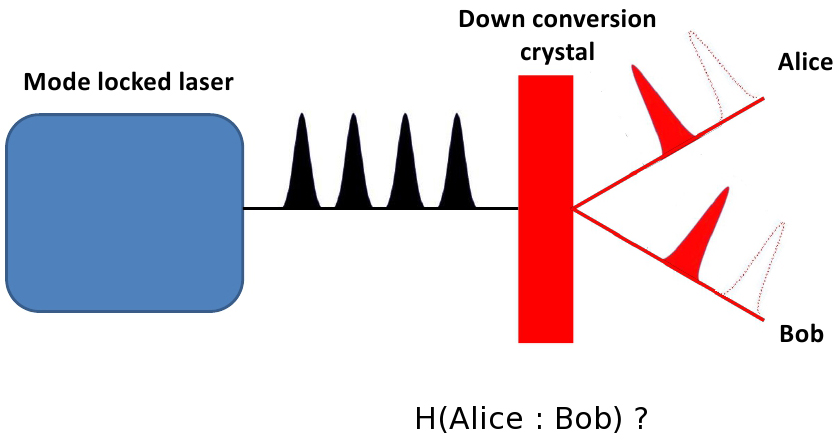https://doi.org/10.1140/epjd/e2016-70357-4
Regular Article
The information of high-dimensional time-bin encoded photons
1 School of Physics, University of
Glasgow, Glasgow, G12
8QQ, UK
2 Institute of Mathematics and Natural
Sciences, University of Applied Sciences and Arts, North Western, Switzerland, Bahnhofstrasse 6,
5210
Windisch,
Switzerland
3 Department of Physics, Duke
University, Box
90305, Durham,
North Carolina
27708,
USA
4 Department of Physics, Ohio State
University, Columbus,
Ohio
43210,
USA
a
e-mail: thomas.brougham@glasgow.ac.uk
Received:
27
May
2016
Received in final form:
29
July
2016
Published online:
20
October
2016
High-dimensional entanglement is an important physical resource for quantum communication. A basic issue for any communication scheme is how many shared bits two parties can extract subject to experimental noise. We determine the shared information that can be extracted from time-bin entangled photons using frame encoding. We consider photons generated by a general down-conversion source and also model losses, dark counts and the effects of multiple photons within each frame. Furthermore, we describe a procedure for including other imperfections such as after-pulsing, detector dead-times and jitter. The results are illustrated by deriving analytic expressions for the maximum information that can be extracted from high-dimensional time-bin entangled photons generated by down conversion. A key finding is that under realistic conditions and using standard SPAD detectors one can still choose the frame size so as to extract over 10 bits per photon. These results are thus useful for experiments on high-dimensional quantum-key distribution systems, but are not limited to such systems. For example, the results are also useful for determining the limits of fibre arrays or within time-multiplexing schemes.
Key words: Quantum Information
© The Author(s) 2016. This article is published with open access at Springerlink.com
 This is an open access article distributed under the terms of the Creative Commons Attribution License (http://creativecommons.org/licenses/by/4.0/), which permits unrestricted use, distribution, and reproduction in any medium, provided the original work is properly cited.
This is an open access article distributed under the terms of the Creative Commons Attribution License (http://creativecommons.org/licenses/by/4.0/), which permits unrestricted use, distribution, and reproduction in any medium, provided the original work is properly cited.





